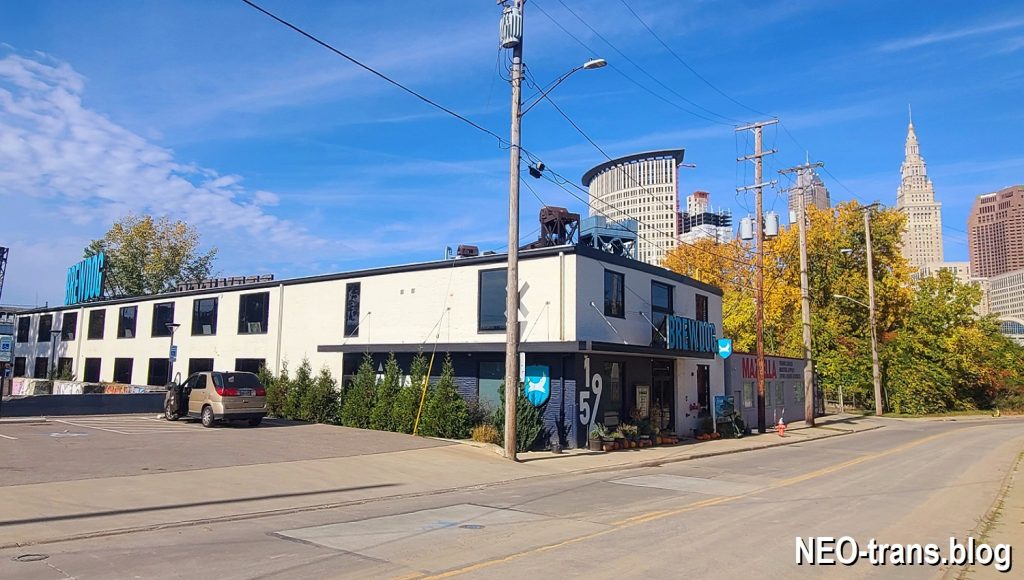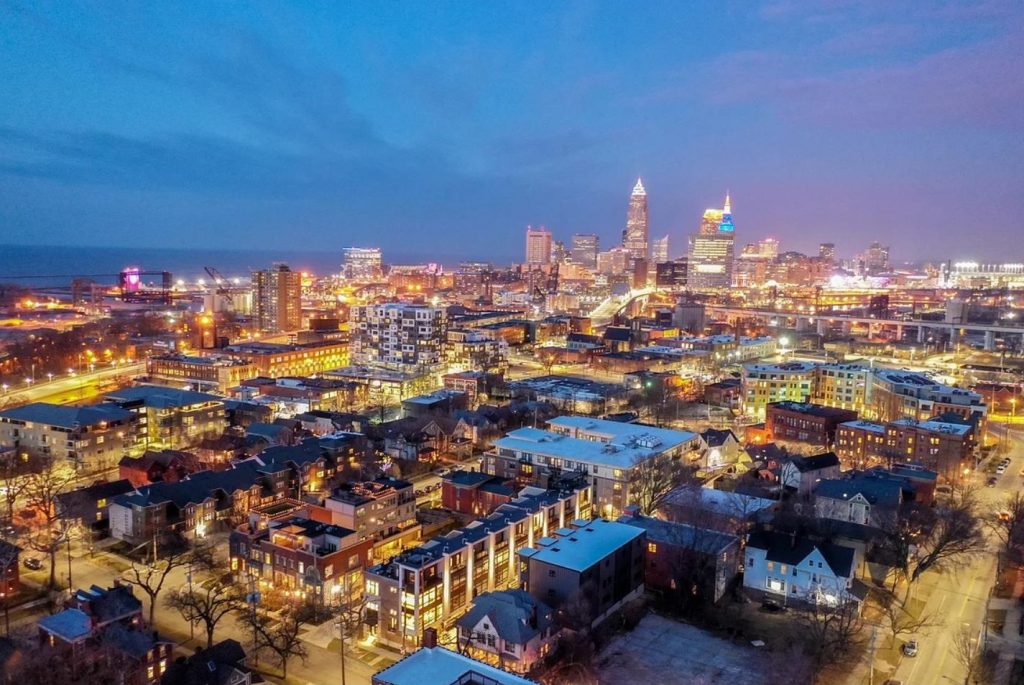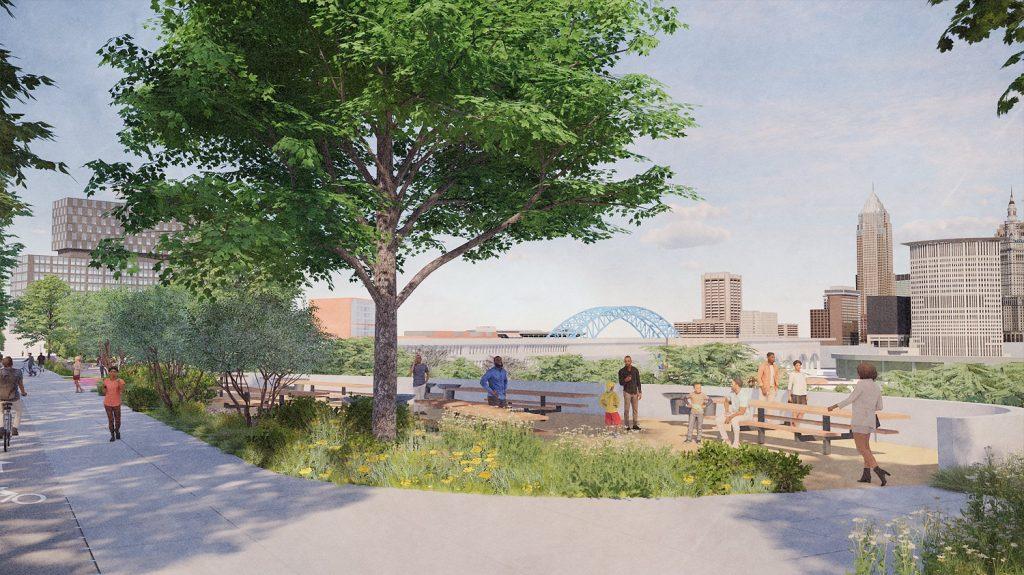UPDATED APRIL 17, 2020
Lakewood Mayor Meghan George will reportedly announce tomorrow that Carnegie Management and Development Corp. is withdrawing as the city’s chosen developer of the $72 million One Lakewood Place project, according to two sources.
The divorce is due to irreconcilable differences over who should pay upwards of $2 million worth of clean-up costs after pollutants were discovered late in into the inspection, clean-up and demolition of the 5.6-acre site at Detroit and Belle avenues in downtown Lakewood. Also, an old creek was found under the site.
It comes at a particularly unfortunate moment for the One Lakewood Place project as Carnegie had joined forces two months earlier with lodging developer Ceres Enterprises LLC of Westlake to add an eight-story boutique hotel to the project.
Also, Carnegie had a tentative deal with a global insurance company to relocate more than 100 employees from a suburban Cleveland office to One Lakewood Place, according to a third source who spoke off the record.
Timing of the separation is especially bad as businesses and municipalities are tightening their belts as they face reduced business and tax revenues from the economic shutdown to mitigate the spread of the COVID-19 virus. It will be difficult for the city to come up with additional money to clean up the site, and for any replacement developer to financially contribute what Carnegie would not.
 |
| A clear sign of trouble was the removal of this sign on or about April 9 at Detroit and Belle avenues. However, there were other signs of trouble brewing months before (The Lakewood Citizen). |
“The city will have to identify another developer,” said a source close to the project. The source, who wasn’t authorized to speak publicly about the project, did not wish to be identified in this article. “The city may go with its second choice (of developer).”
One Lakewood Place was proposed with 200 housing units, 100,000 square feet of offices, 84,000 square feet of retail and the aforementioned hotel which would have re-purposed the historic but vacant Curtis Block, 14501 Detroit Ave.
The site for the mega-development was the former Lakewood Hospital that was demolished a year ago. The source noted that, when the city solicited for development proposals for the site, none of the developers proposed retaining the hospital’s buildings. They all wanted the site cleared and cleaned so they could start anew.
This was Carnegie’s first-ever development project on a site that had been previously developed. Its prior experience was in developing farmlands and forests at or beyond suburban fringe. Another source said that Carnegie was not aware of the higher costs of developing previously developed land in older, established communities.
A message left with a receptionist for Rustom Khouri III, director of business development at Carnegie, was not returned prior to publication.
 |
| Aerial view of Carnegie’s vision of what One Lakewood Place would have looked like. A new developer will have to take over from where Carnegie had left off (Carnegie). |
Per Carnegie’s development agreement with the city, the developer must deliver to the city “a complete set of all surveys, title reports, environmental reports, soil studies and all other written materials, records or other documents related to the Project that are in Developer’s possession or under its control.”
Also, per the agreement, Carnegie was responsible for identifying any environmental problems with the site. Furthermore, the developer released the city of responsibility for all liability for the site’s environmental conditions.
But it was the city that had hired SafeCo Environmental Services Inc. in November 2018 and budgeted nearly $4.6 million?to remove asbestos and other hazardous materials as well as demolish the hospital buildings. Their work was completed in mid-2019. Construction of One Lakewood Place was due to start by the end of 2019.
Former Mayor Mike Summers chose not to seek re-election last fall. He was succeeded by Mayor George, who narrowly defeated former Council President Sam O’Leary; she was sworn in this past January. George, an outspoken critic of the project, took a new look at the One Lakewood Place development after taking office.
On March 11, Mayor George along with then-Planning Director Bryce Sylvester co-wrote a letter to City Council members advising them that the One Lakewood Place project was in trouble. Sylvester was since hired for another job outside of the city; he did not return a phone message requesting more information.
George said that, on Feb. 7, the city delivered the final certification letter that the demolition, abatement, and the site preparation work at the former Lakewood Hospital site has been completed per the development agreement between Carnegie Management and the City of Lakewood.
“Environmental concerns uncovered during the demolition required additional steps and costs, pushing back our delivery date to February 7th, but still within the timeline established in the development agreement,” George and Sylvester wrote.
“As you recall, (city) council approved additional contracting authority to support environmental cleanup of the site in December 2019. Even with these additional city funds contributed to the project for environmental mitigation, the developer has identified a significant financial gap, which represents a challenge to executing on the project as originally contemplated. Carnegie and the city have been exploring ways to move forward and make the project a reality,” the letter added.
The newly discovered pollutants reportedly were from the former Lakewood Hospital laundry facilities which needed to be cleaned. The old creek found under the site had to be relocated and a pump house added, sources said.
Several city officials contacted by NEOtrans said they would not comment until after the mayor’s official announcement tomorrow.
Developing in a built-up, densely populated inner-ring suburb isn’t easy. For example, the City of Cleveland Heights had spent 20 years and is now on its fourth developer, Flaherty and Collins, to proceed with constructing the Top of The Hill mixed-use development atop Cedar Hill. That project is scheduled to break ground this spring.
END





Comments are closed.